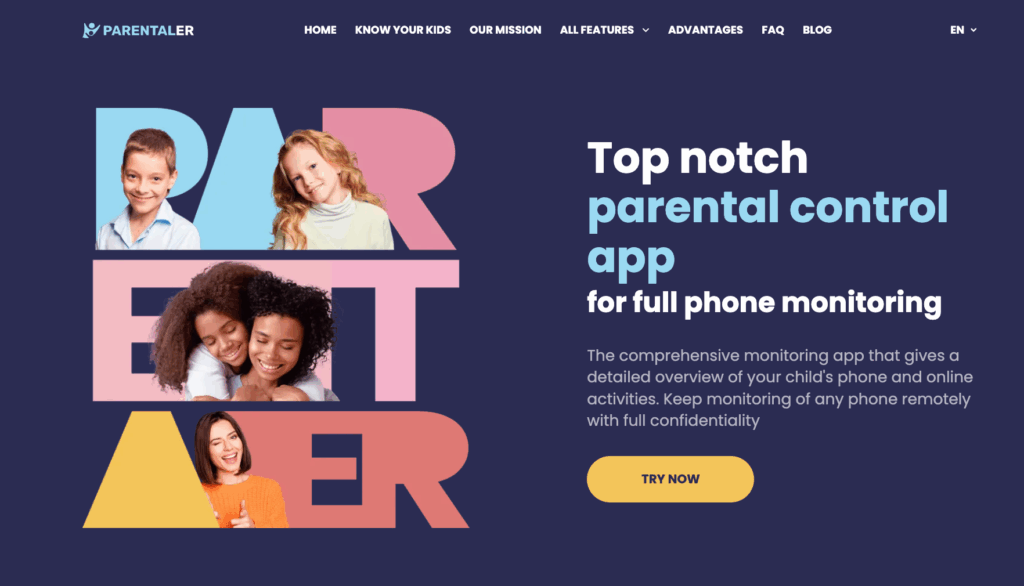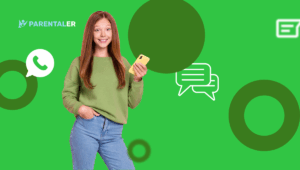

מטפלים מודרניים מתמודדים עם השוואה מתמדת, אך מחקרים מצביעים על סימנים ברורים ומעשיים של הורות חזקה. קלינאים מציינים שבעה סמנים: ילד מפגין רגש מלא עם המטפל, מחפש נחמה כשהוא נפגע, משתף מחשבות ללא פחד, מקבל משוב ממוקד התנהגות, בוחן כישרונות, חי במסגרת גבולות בטוחים וחווה תיקון לאחר טעויות.
הורות חיובית מקושרת לתוצאות טובות יותר בלימודים, פחות בעיות התנהגות ובריאות נפשית חזקה יותר. מדעי המוח מוצאים גם התפתחות בריאה יותר באזורי מוח הקשורים לרגש וחשיבה במהלך גיל ההתבגרות, כאשר מערכות יחסים מרגישות בטוחות.
דרך פשוטה עוזרת למשפחות בארצות הברית. למדו מיומנויות PRIDE, צרו שגרות וגבולות, והשקיעו ב"זמן אנחנו" יומיומי כמו ארוחות ערב, טיולים, משחק ושיחות לפני השינה.
הורים לא צריכים לשאוף לשלמות; קשר יציב, הדרכה עדינה ותיקון הם החשובים ביותר. מדריך זה מתווה דרך ברורה קדימה המכבדת מציאויות משפחתיות שונות ומתמקדת בבחירות קטנות ועקביות שצומחות לאורך החיים.
הורות חיובית שעובדת עכשיו: מיומנויות PRIDE ויתרונות מגובים במחקר
עידוד יומיומי יוצר קשרים חזקים יותר ולמידה ברורה יותר עבור ילדים. גישת PRIDE - שבח, התבוננות, חיקוי, תיאור, הנאה - מציעה תנועות פשוטות שמשתלבות ברגעי משחק קצרים ובזמן שגרה.
שֶׁבַח: תייגו את המאמץ והצעדים בחום (חיוכים, כיף). שבחים ספציפיים בונים ביטחון ומוטיבציה פנימית אצל הילד.
הִשׁתַקְפוּת: חזרו על דברי הילד והרחיבו אותם. זה מעמיק את ההקשבה, מגביר את תהליכי השיחה ומעודד את התפתחות השפה.
חיקוי: הצטרפו למשחק ברמת הילד. שיקוף פעולות מאמת בחירות ומחזק את היחסים החברתיים בין נתינה וקבלה.
תֵאוּר: ספרו פעולות כמו שדרן ספורט. פרשנות פשוטה מלמדת אוצר מילים וריכוז ללא לחץ.
הֲנָאָה: השתמשו בקשר עין, חיבוקים וטון חם. שמחה משותפת מדגימה אמון והופכת את השגרה היומיומית לבטוחה ומהנה יותר.
- תרגול מהיר: חמש עד עשר דקות של משחק בהובלת ילדים עם מיומנויות PRIDE מצטברות לאורך שנים.
- מֶחקָר: מחקרים מקשרים אינטראקציות אלו עם תוצאות טובות יותר בבית הספר, פחות בעיות התנהגות והתפתחות מוחית בריאה יותר בקרב מתבגרים.
| מיומנות PRIDE | פעולה פשוטה | יתרון מרכזי |
|---|---|---|
| שֶׁבַח | ציינו את המאמץ והצעדים | בונה מוטיבציה וביטחון |
| הִשׁתַקְפוּת | חזור על מילים והוסף אותן | משפר את השפה ואת ההקשבה |
| חיקוי | העתקת מהלכי משחק | מחזק מיומנויות חברתיות |
| תיאור והנאה | ספרו פעולות; שתפו בחום | משפר את המיקוד והקשר |
בניית ביטחון רגשי ואמון בתקשורת עם ילדים

כאשר ילדים מרגישים בטוחים, רגשותיהם החזקים הופכים לאותות לתיקון ולמידה. זה יוצר בסיס שבו ילד יביא דאגות, כעס או עצב למשפחה במקום להסתיר אותם.
קבלו בברכה רגשות גדולים כדי שילדים ירגישו נראים, בטוחים ומובנים
תנו שם ברור לרגשות: "אתה נראה נסער" או "אני רואה שאתה זועם". אישור קצר עוזר לילד להירגע ולהרגיש שהוא נשמע.
צור "דלת פתוחה" למחשבות ורגשות ללא חשש מתגובת יתר
הורים שמקשיבים מבלי להתמקד בפאניקה שלהם מזמינים כנות. שפת גוף רגועה וטון יציב מקלים על ילדים לשתף את הבעיות תחילה.
השתמשו במשוב לא ביקורתי ולא מתויג, המכוון להתנהגות ולא לזהות
הימנעו מתוויות כמו "חמדן". אמרו, "אכלת את הביסקוויטים בלי לחלוק. בואו נתקן את זה עכשיו." זה שומר על כבודו של הילד תוך כדי שינוי פעולות.
תיקון קרעים: טעויות משלך, הסברת רגשות וחיבור מחדש
כאשר מבוגרים מגיבים יתר על המידה, התנצלות בתוספת הסבר קצר מחזירה את האמון. אמירה של "איבדתי את קור רוח. הרגשתי מוצף ואני מצטער", מדגימה אחריות ואהבה.
- נקודה מרכזית: גבולות ותיקון עובדים יחד - גבולות ברורים עם חמלה מגנים על הקשר.
- תוֹצָאָה: עם הזמן, ילדים לומדים דיבור עצמי עדין יותר ואמפתיה רבה יותר.
איך להיות הורה טוב עם שגרות, גבולות ועקביות
שגרות צפויות עוזרות לילדים לדעת מה יקרה הלאה והופכות את הימים לרגועים יותר. קצב ברור, גבולות אדיבים ומעקב קבוע יוצרים בית אמין שבו ילד יכול ללמוד ולנוח.
קצב יומי התומכים בשינה, בבית הספר ובחיי משפחה רגועים יותר
הגדר עוגנים פשוטים: רשימות תיוג בבוקר, מנוחה אחרי שעות הלימודים, קטע שיעורי בית, כללי כיבוי מכשירים ושעת שינה מרגיעה. דפוסים קטנים אלה מפחיתים מתח ומגנים על השינה.
גבולות ברורים ששומרים על בטיחות הילדים בבית, באינטרנט ובמסגרות חברתיות
גבולות הם מעקות בטיחות אכפתיים. הסבירו את הכללים מראש ובדקו אותם בצורה חיובית - זה עוזר לילדים לקבל גבולות ללא בושה.
- הציעו אפשרויות בחירה במסגרת מגבלות (לדוגמה, "צחצחו עכשיו או אחרי הפיג'מה?") כדי לבנות שיתוף פעולה.
- ספרו לבני נוער את ציפיותיהם לגבי מסיבות, עוצר ואלכוהול; בהירות מפחיתה את הסיכון לאורך השנים.
- שמרו על כללים עקביים בין המטפלים כדי שהילדים יזכרו מה לעשות ולמה זה חשוב למשפחה.
- כאשר מתרחשות תקלות, חזרו לשגרה בלי לבייש; מבנה נועד לעזור, לא לשלוט.
הפכו את הזמן המשותף למשמעותי: חוזקות, הכרת תודה, משחק ותקווה
בלוקים קטנים וממוקדים של זמן משותף יכולים להפוך את המתח היומיומי לחיבור מתמשך. משפחות מדווחות על הרגעים הטובים ביותר שלהן במהלך ארוחות, ביקורים בפארקים, ערבי משחקים ושיחות לפני השינה. שמירה על מעט זמן קבוע יוצר פתחים שבהם ילדים חולקים, צוחקים ומרגישים בטוחים.
הגנו על "זמן העצמאות": ארוחות, טיולים, שיחות לפני השינה ומשחקים ללא מסכים
חסמו רגעים פשוטים בלוח השנה. ארוחות משפחתיות, טיולים קצרים בשכונה ומשחק ללא מכשירים נותנים לילדים הזדמנויות בטוחות לשוחח. הרגלים אלה מתאימים לימי עבודה ולימודים עמוסים ושומרים על מערכת יחסים יציבה.
זהה ופיתח נקודות חוזק בכל ילד - והשתמש בנקודות החוזק שלך
שימו לב למה כל ילד עושה טוב - יצירתיות, טוב לב, ריכוז - ובנו הזדמנויות למיומנות הזו לזרוח. הורים יכולים להישען על נקודות החוזק שלהם, כמו תכנון או משחקיות, כדי לגרום לקשר להרגיש טבעי ויעיל.
תרגול הכרת תודה כדי לשפר את מצב הרוח, את האמון ואת הקשר בבית ובבית הספר
טקסים פשוטים - אמירת שלושה דברים טובים בארוחת הערב או השארת פתק קצר בתיק הגב - מעלים אופטימיות ומשפרים את המעורבות בבית הספר. הרגלי הכרת תודה עוזרים לילדים ולמבוגרים להבחין בדברים חיוביים בחיי היומיום.
שימוש בטכנולוגיה לתמיכה בהורות בטוחה
לצד מיומנויות PRIDE, שגרות וקשר קבוע, הורים מודרניים יכולים גם להפיק תועלת מכלים המסייעים להם להגן על ילדיהם בעולם הדיגיטלי. שירותים כמו Parentaler.com מציעים דרך פשוטה ודיסקרטית לנטר את הפעילות המקוונת של ילד, מיקומו ושימושו במכשיר. אפליקציה מסוג זה יכולה להעניק להורים שקט נפשי על ידי התרעה מפני סכנות פוטנציאליות - בין אם מדובר באתרים לא בטוחים, הודעות חשודות או התנהגות מסוכנת ברשתות חברתיות - תוך כיבוד הצורך של הילד בעצמאות. כאשר משתמשים בהן בתבונה, אפליקציות בקרת הורים יכולות להשלים אסטרטגיות הוריות יומיומיות, ולפעול כשכבת בטיחות נוספת כך שילדים יוכלו לחקור, ללמוד ולהתחבר בסביבה מאובטחת יותר.

הובל בתקווה ובמודעות ליציבות רגשית והדגמה לחוסן
רגעים קצרים של מודעות ושפה מלאת תקווה - "אנחנו יכולים להתמודד עם זה" - מרגיעים מתחים ומלמדים התמודדות עם החיים המאוחרים יותר. חמש דקות של משחק בהובלת הילד במהלך מעברים יכולות להפוך לגשר מתמשך חזרה לשלווה.
- שלבו מטלות עם שיחה - בישול או קיפול תוך כדי שיחה - כדי שהזמן יעבוד עבור כולם.
- בחרו כמה דרכים בנות קיימא להתחבר; יציבות עדיפה על אירועים חד פעמיים אינטנסיביים.
| פְּעִילוּת | תוֹעֶלֶת | זְמַן |
|---|---|---|
| ארוחת ערב משפחתית | שיחה ואמון | 20–30 דקות |
| צ'אט לפני השינה | שינה רגועה ובטוחה | 5–10 דקות |
| לשחק או ללכת | קשר ולמידה | 10–30 דקות |
מַסְקָנָה
צעדים קטנים הננקטים מדי יום יוצרים בסיס אמין המסייע לילדים להתמודד עם רגשות ואתגרים גדולים.
בחרו דבר אחד או שניים לתרגל היום - שבח מסומן במהלך שיעורי הבית או שיחה של עשר דקות לפני השינה. הניצחונות הקטנים האלה בונים מומנטום אמיתי.
הורים שנשארים סקרנים לגבי עולמו הפנימי של ילדם, שומרים על גבולות יציבים ומתייחסים לטעויות כהזדמנויות למידה בדרך כלל רואים התקדמות. כאשר אסטרטגיות לא עובדות בהתחלה, התאמת התזמון או המסגרת לרוב מניבה תוצאות טובות יותר.
עקביות עם חום, תיקון והרגלי קשר יומיומיים קצרים עושים יותר מכל רשימת בדיקה. בדרך זו מעצבת התנהגות, הצלחה בלימודים וצמיחה בריאה יותר לאורך זמן.



